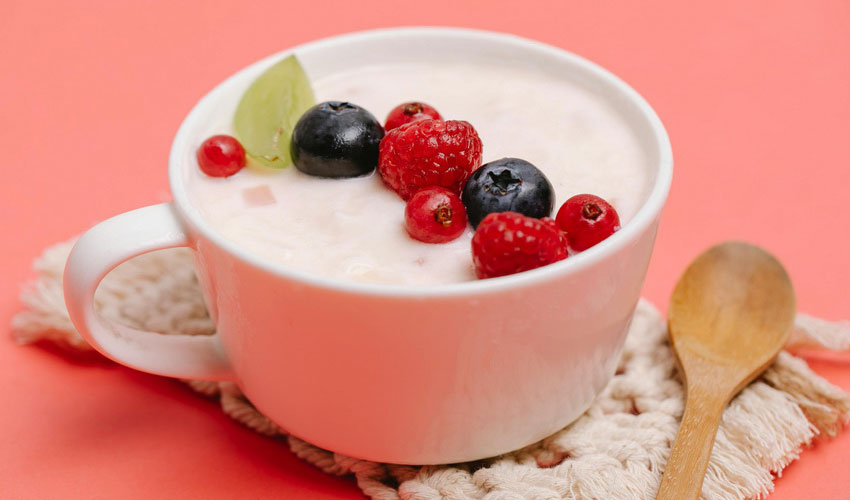Food "Rules" Parents Shouldn't Stress Over
I vividly recall the struggles my wife and I faced when our son and daughter were just toddlers, refusing to eat any vegetables or fruits. Our daughter, in particular, had a strong aversion to anything green or healthy. It required a great deal of creativity and patience on our part to find ways to sneak in those essential nutrients. One trick that seemed to work wonders was incorporating vegetables like carrots, spring onions, and cabbage into Thai rice soup, known as Khao Tom. By finely chopping these veggies and mixing them into the soup, our daughter was none the wiser and happily slurped up every last bite. It was like magic watching her enjoy a meal that was not only delicious but also nutritious. Stay tuned for the Khao Tom recipe coming your way! Keep reading to find out how to make this delicious dish.
When it came to fruits, especially apples, we discovered that she was more willing to eat them if they were peeled and cut into tiny pieces. It was a small sacrifice to peel and chop an apple if it meant she was getting some much-needed vitamins and minerals. The relief we felt when our picky eater finally started to embrace healthier options was immeasurable. It was a victory not just for us as parents, but for her well-being and future health. So, if you're dealing with a selective eater in your household, don't lose hope. Sometimes all it takes is a bit of creativity and persistence to find a solution that works for your child.

Feeding young children can be a daunting task, with challenges that often make it feel like an impossible feat. It's no surprise that many parents turn to Google and social media for information, advice, and stories from others who can relate to the struggles. Sometimes, all you need is a little reassurance that you're not alone in battling a picky eater. But along with the bond of online parenting communities comes a flood of comparisons and misinformation. In today's digital age, influencers are seen as authorities and fear-mongering about food choices is prevalent. It's just as likely that after scrolling through Instagram, you'll feel defeated rather than supported. However, there is a silver lining amidst the chaos. The truth is, a significant portion of child-feeding advice found on the internet is either completely false or a major oversimplification of the facts.
Instead of being overwhelmed by the constant influx of conflicting information, take a deep breath and relax. After combing through articles written by paediatricians and nutritionists, I've compiled a list of common misconceptions about feeding children that parents can finally put to rest. It's time to shed the unnecessary worry and focus on what truly matters when it comes to nourishing our little ones.
Do Kids Really Need to Eat a Wide Variety of Foods?
When it comes to children and their eating habits, it's no surprise that parents often feel overwhelmed with worry. The pressure from society, diet culture, and wellness trends can all contribute to the belief that children must be eating a wide variety of foods in order to be healthy. But here's the truth: it's not always necessary. Many parents come to the dietician's office fearing that their child is not getting enough variety in their diet. However, upon closer examination, it's often revealed that the child is actually getting enough nutrients despite their limited food choices. So why all the stress and pressure? The reality is, young children are naturally hesitant when it comes to trying new foods. Their developing taste buds and independent spirits can make meal times a struggle. And that's okay. It's all part of the growing process.
Parents, it's time to ease up on yourselves! You're doing a great job. Instead of focusing on the variety of foods your child eats, focus on offering foods in different ways. If your child doesn't like fish, try incorporating it into a meal they already enjoy, like tacos. This way, they have the opportunity to try something new without feeling pressured. Remember, it's important not to force your children to eat things they don't want to. By giving them the option to try new foods at their own pace, you're creating a positive and stress-free environment around meal times. And who knows, it may take years for some kids to develop a liking for certain foods. Patience is key! So take a deep breath, parents. Let go of the unnecessary pressure and instead focus on creating a positive and enjoyable eating experience for your child. By doing so, you'll not only reduce stress around meal times, but you'll also foster a healthy relationship with food for your child.

Why Parents Shouldn't Dictate Their Kids' Food Portions
Parents often feel the weight of responsibility when it comes to their child's weight, believing that if their child is on the heavier side, they are failing as parents. The desire to be good parents drives them to worry about controlling their child's portions. However, it's crucial to understand that children grow at different rates and naturally come in various sizes. Attempting to fit every child into a predetermined weight category disregards this natural diversity and can lead to the development of eating disorders, unhealthy eating behaviours, and a negative body image. Instead of dictating how much your child should eat, I suggest adopting a family-style meal approach where children, including toddlers, can serve themselves portions according to their appetite. In most cases, children will eat the right amount for their bodies when given the freedom to choose. While exceptions exist, empowering children to make their own food choices fosters a healthy relationship with food and encourages intuitive eating habits.
Should I Give My Little One a Multivitamin?
In the sphere of children's health and nutrition, the question of whether to introduce a multivitamin supplement into your child's routine is a common dilemma. While it might be tempting to reach for a multivitamin as a quick fix, the decision should be approached with caution and expert guidance. It stands true that if your child maintains a diverse and balanced diet and shows no signs of nutrient deficiencies, they likely do not require a multivitamin. However, in cases where a child's diet is significantly limited or restricted, seeking advice from a professional nutritionist is paramount before jumping to supplementing with a multivitamin. The collaborative expertise can provide valuable insights into your child's individual nutritional needs. Through diagnostic tests and assessments, potential nutrient deficiencies can be identified and targeted with precision. This personalised approach may lead to recommendations for specific nutrient supplements tailored to address the deficiencies, rather than opting for a broad-spectrum multivitamin. By placing your trust in healthcare professionals and prioritising a thorough evaluation of your child's dietary habits and health status, you can make informed decisions that promote optimal health and well-being. Remember, the goal is not merely to rely on supplements but to ensure that your child's nutritional requirements are met through a balanced diet, supplemented strategically if necessary under expert supervision.
The Right Time to Give Your Kid a Multivitamin
In today's fast-paced world, parents are bombarded with conflicting information about the benefits of multivitamins for children. With so many options available on the market, it can be overwhelming to determine whether or not your child truly needs a multivitamin supplement. In this comprehensive paragraph I aim to provide clarity and insight into the factors to consider when deciding when to give your kid a multivitamin.
- Understanding Children's Nutritional Needs: Children have unique dietary requirements as they grow and develop. While a balanced diet rich in fruits, vegetables, whole grains, and lean proteins is essential for their overall health, there are instances where children may benefit from a multivitamin supplement. Factors such as picky eating habits, food allergies, medical conditions, or lifestyle choices can all impact a child's ability to obtain adequate nutrients solely from food.
- Consulting with Healthcare Professionals: Before introducing any supplements, it is crucial to consult with your child's healthcare provider. A paediatrician or registered dietician can assess your child's individual nutritional needs, dietary habits, and health status to determine if a multivitamin is necessary. They can also recommend specific brands or formulations that align with your child's requirements.
- Signs Your Child May Benefit from a Multivitamin: While most children can meet their nutritional needs through a well-balanced diet, there are certain signs that may indicate a need for supplementation. These signs include: - Picky eating habits leading to limited food variety - Food allergies or intolerances affecting nutrient intake - Health conditions that impact nutrient absorption or metabolism - Vegetarian or vegan diet that may lack certain essential nutrients - Low energy levels, fatigue, or frequent illness.
- Choosing the Right Multivitamin: Not all multivitamins are created equal, and it's essential to select a high-quality product that meets your child's specific needs. Look for multivitamins that are formulated for children and contain key nutrients such as vitamin D, calcium, biotin, and B vitamins. Avoid supplements with excessive amounts of vitamins or minerals that may exceed the recommended daily allowances. Here you can purchase a Full Spectrum Children’s Multivitamins & Minerals Food Supplement.

Can My Kids Eat Kids Sugar?
In today's health-conscious world, it's not uncommon for parents to develop a preoccupation with the sugar content in their children's diets. This obsession often escalates to the point where some parents meticulously track their child's fruit consumption, concerned that even nature's sweetest offerings might contribute excessive sugar to their little ones' diets. With the pervasive discussions surrounding sugar in various online wellness communities, it’s understandable that parents may feel compelled to micromanage every morsel that enters their child's mouth. However, this heightened vigilance is not only unnecessary but can also be counterproductive. Firstly, it’s important to recognise that fruit, despite its naturally occurring sugars, is a nutritional powerhouse. Fruits are not just sweet treats; they are brimming with essential vitamins, minerals, and dietary fibre, all of which play a pivotal role in supporting a child's growth and development. The fibre found in fruit aids digestion, helps maintain a healthy gut, and can even contribute to a feeling of fullness, making it a far healthier choice than many processed snacks. Instead of fearing fruit, parents should embrace it as a vital component of their child's diet.
Moreover, sugar, along with other carbohydrates, serves as the body's primary source of energy. For growing children, who are often engaged in a range of activities that demand high energy levels, adequate carbohydrate intake is crucial. Rather than demonising sugar, we should focus on the broader picture of balanced nutrition. Children require a sufficient amount of energy to fuel their play, learning, and overall physical and cognitive development. I would encourage parents to cultivate a comprehensive understanding of their child’s dietary habits. Instead of fixating on specific ingredients or macronutrients, it’s more beneficial to look at the overall dietary landscape. As long as high-sugar foods such as candies, sugary cereals, and indulgent baked goods do not dominate a child's diet, there’s no real cause for alarm regarding sugar intake. Moderation is key, and allowing children to enjoy a variety of foods, including those that may be higher in sugar, can foster a healthier relationship with food. Ultimately, it’s about balance and perspective. By adopting a more nuanced view of sugar and focusing on providing a diverse array of nutritious foods, parents can help their children develop healthy eating habits that will last a lifetime, all while alleviating unnecessary anxiety around food choices. Embrace the sweetness of fruit, and remember: a little sugar is a part of a well-rounded diet.
The Best Foods for Your Kids
As parents, one of our primary responsibilities is to ensure that our children grow up healthy and strong. A vital part of this responsibility revolves around their nutrition. The foods your kids eat can significantly impact their growth, development, and overall well-being. With countless options available, knowing which foods are the best for your kids can sometimes feel overwhelming. In this section I’ll try to guide you through the best food choices for your children, ensuring they receive the nutrients they need to thrive. Before diving into specific foods, it's essential to understand the nutritional needs of children. Kids require a balanced diet rich in:
- Carbohydrates: For energy, especially important for active children.
- Proteins: For growth, development, and muscle repair.
- Fats: Healthy fats are crucial for brain development and energy.
- Vitamins & Minerals: Essential for overall health, immune function, and growth.
- Fibre: Important for digestive health.

Age-Specific Nutritional Guidelines
Children's nutritional needs vary by age. Here's a quick breakdown:
- Infants (0-12 months): Breast milk or formula should be the primary source of nutrition. As they grow, introduce pureed fruits, vegetables, and iron-fortified cereals.
- Toddlers (1-3 years): Focus on whole grains, fruits, vegetables, lean proteins, and dairy. They need healthy fats for brain development.
- Pre-Schoolers (4-5 years): Continue the foundation laid in toddlerhood with a balanced diet, introducing a wider variety of foods and flavours.
- School-Age Children (6-12 years): Their diet should be diverse, incorporating all food groups to support growth and energy needs.
- Teenagers (13-18 years): Nutritional needs increase due to growth spurts. Focus on calcium-rich foods, proteins, and iron.
The Best Foods for Kids
- Fruits & Vegetables: Fruits and vegetables are packed with essential vitamins, minerals, and fibre. Aim for a colourful variety to ensure children receive a broad spectrum of nutrients.
- Berries: Blueberries, strawberries, and raspberries are rich in antioxidants and vitamin C.
- Carrots: High in beta-carotene, which is converted into vitamin A, essential for vision and immune function.
- Spinach: A super-food loaded with iron, calcium, and vitamins A and C.
- Bananas: A great source of potassium and energy, perfect for active kids.
Whole Grains
Whole grains provide essential carbohydrates and fibre, which are crucial for energy and digestion.
- Oatmeal: A fibre-rich breakfast option that helps keeping kids full and satisfied.
- Brown Rice: A healthier alternative to white rice, providing more nutrients and fibre.
- Whole Grain Bread: Opt for breads that list whole grains as the first ingredient.
Lean Proteins
Proteins are vital for growth and development, especially in active children.
- Chicken & Turkey: Lean poultry is an excellent source of protein and can be prepared in various kid-friendly ways.
- Fish: Salmon and tuna are rich in omega-3 fatty acids, essential for brain development.
- Eggs: Packed with protein and vital nutrients like choline, which supports brain health.
- Legumes: Beans, lentils, and chickpeas are excellent plant-based protein sources and are also high in fibre.

Dairy & Dairy Alternatives
Dairy products are essential for calcium and vitamin D, which are critical for bone development.
- Fresh Milk: Opt for low-fat or non-fat options for older kids; plant-based alternatives like almond or soy milk can be good, but ensure they are fortified with calcium and vitamin D.
- Yogurt: A great source of probiotics and calcium. Choose plain varieties and add fresh fruits for sweetness.
- Cheese: Rich in calcium and protein, cheese can be a tasty snack or addition to meals.
Healthy Fats
Healthy fats are essential for brain development and overall health.
- Avocado: A nutrient-dense fruit high in healthy fats, fiber, and vitamins.
- Nuts & Seeds: Almonds, walnuts, chia seeds, and flaxseeds provide healthy fats, protein, and fibre. Be cautious of choking hazards for younger children.
- Extra Virgin Organic Olive Oil: A healthy fat that can be used in cooking or as a salad dressing.
Snacks & Treats
Healthy snacks can help keep kids energised and satisfied between meals.
- Popcorn: A whole grain snack that's low in calories and can be a healthy treat when air-popped and lightly seasoned.
- Fruit Smoothies: Blend fruits with yogurt or milk for a nutritious and tasty snack.
- Nut Butter: Spread on whole-grain bread or apple slices, nut butter provides protein and healthy fats.
Tips for Encouraging Healthy Eating Habits
- Lead by Example: Children are more likely to eat healthy foods if they see their parents enjoying them.
- Involve Kids in Cooking: Letting kids help prepare meals can make them more interested in trying new foods.
- Make Meals Fun: Use cookie cutters to create fun shapes or arrange fruits and vegetables in appealing ways.
- Limit Sugary Drinks: Encourage pure water or fresh milk instead of sugary sodas and juices.
- Be Patient: It can take several exposures to a new food before a child will accept it. Keep offering it without pressure.

Kid-Friendly Thai Rice Soup (Khao Tom) Recipe
Here's our kid-friendly recipe for Thai Rice Soup, also known as Khao Tom. This dish is gentle on the stomach, easy to digest, and can be customised to suit your child's taste…
Ingredients:
- 1 cup jasmine rice (or any short-grain rice)
- 6 cups chicken or vegetable broth (low sodium)
- 1 cup cooked chicken (shredded or diced, optional, can use rotisserie chicken)
- 1-2 eggs (optional, for added protein)
- 1-2 tablespoons fish sauce (or soy sauce for a vegetarian option)
- 1 teaspoon sesame oil (optional)
- 1-2 green onions (sliced thinly)
- Fresh cilantro (for garnish, optional)
- 1 small carrot (finely chopped or grated, optional for sweetness and nutrition)
- salt & pepper to taste
- 1 spring union (finely chopped)
Instructions:
- Cook the Rice: Rinse the jasmine rice under cold filtered water until the water runs clear to remove excess starch. In a medium pot, combine the rinsed rice and 6 cups of broth. Bring to a boil over medium heat.
- Simmer: Once boiling, reduce the heat to low and cover the pot. Let it simmer for about 15-20 minutes, or until the rice is soft and has absorbed most of the liquid. Stir occasionally to prevent sticking.
- Add Chicken: If using cooked chicken, add it to the pot now and stir to combine. Allow it to heat through (about 2-3 minutes).
- Add Carrots: If you’re adding grated carrots for extra nutrition, toss them in and let them soften slightly in the hot soup.
- Add Eggs (Optional): If you want to add eggs, you can either beat them in a bowl and slowly drizzle them into the soup while stirring, or gently drop in whole eggs and let them poach for a few minutes.
- Season: Stir in the fish sauce (or soy sauce) and sesame oil. Taste and adjust the seasoning with salt and pepper as needed. Finally add the chopped spring union.
Serve:
- Ladle the rice soup into bowls. Top with sliced green onions and fresh cilantro if desired.
Cool Down:
- Let the soup cool slightly before serving it to kids to avoid burns.
This Khao Tom recipe is nourishing and can be a comforting meal for kids, especially during colder months or when they’re feeling under the weather. Enjoy!
“Feeding my children is not like feeding myself: it matters more.” - Jonathan Safran Foer






















